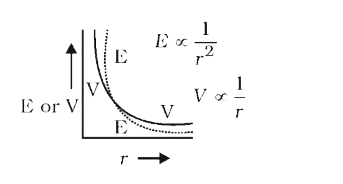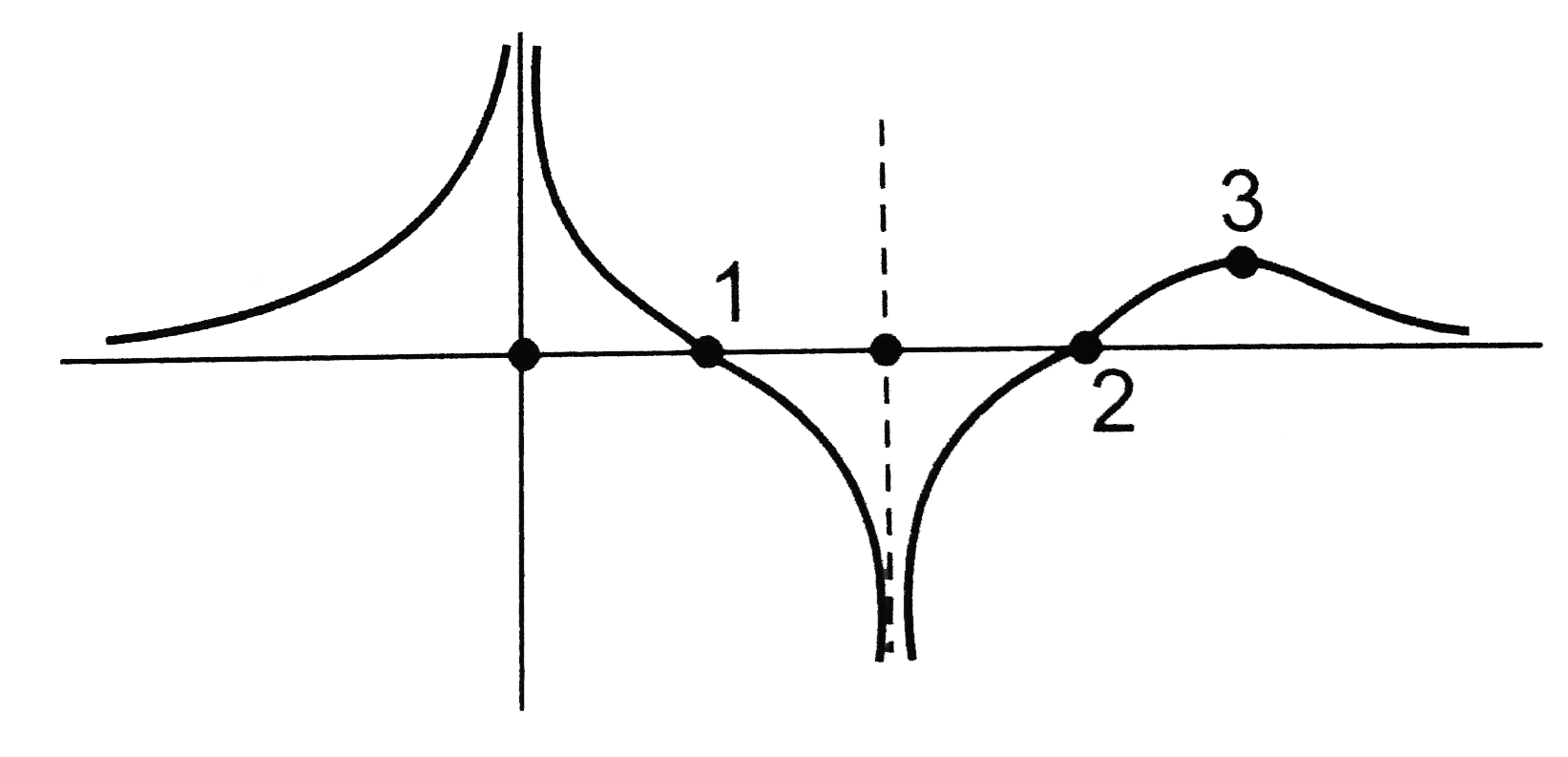Plot a graph comparing the variation of potential ‘V’ and electric field ‘E’ due to a point charge ‘Q’ as a function of distance r from point charge
(ii) Find the ratio of the potential differences that must be applied across the parallel and the series combination of two identical capacitors so that the energy stored, in the two cases, becomes the same.
(i) The graph variation of potential and electric field due to a point charge Q with distance R fro the point charge is shown in figure.
(ii) Let C be capacitance of each capacitor.
In series arrangement net caapcitance CS=C2.
In parallel arrangement, net capacitance, CP=2C
Energy stored U=12CV2
If VSandVp are potential difference applied across series parallel arrangments, then given
US=Up⇒12CSV2S=12CpV2p⇒VpVS=√CSCp=√C/22C=12

Similar Questions
Find the ratio of the potential differences that must be applied across the parallel and series combination of two capacitors C1andC2 with their capacitances in the ratio 1 : 2 so that the energy stored in the two cases becomes the same.
View SolutionFind the ratio of potential difference that must be applied across the parallel and series combination of two capacitors C1andC2 with their capacitance in the ratio 1:3 so that energy stored in the two cases becomes the same.
View Solution
Knowledge Check
Electric potential difference between the positive plate and halfway point between the two parallel plates of a fully charged capacitor is
AZeroBOne half of the total potential difference between the two platesCOne quarter of the total potential difference between the two platesDNone of the aboveWhen some potential difference V is applied across a resistance R then the work by the electrical field on the charge q to flow through the circuit in time t will be
AqVBVitCi2RtDV2tRA combination arrangement of the capacitors is shown in the figure
(ii) If a potential difference of 48 V is applied across points a and b, then charge on the capacitor C3 at steady state condition will be :A8μCB16μCC32μCD64μC
Find the ratio of potential differences that must be applied across the parallel and series combination of two capacitors C1andC2 with their capacitance in the ratio 1 : 2 so that energy stored in the two cases becomes the same.
View SolutionGraphically represent the variation of electric potential and electric field due to point charge with respect to the distance from the point charge.
View Solution(i) Use Gauss's law to find the electric field due to a uniformly charged infinite plane sheet. What is the direction of field for positive and negative charge densities?
(ii) Find the ratio of the potential differences that must be applied across the parallel and eries combination of two capacitors C1 and C2 with their capacitances in the ratio 1:2 so that the energy stored in the two of two capacitors C1 and C2 with their capacitances in the ratio 1:2 so that the energy stored in the two cases becomes the same.
View SolutionDraw a plot showing the variation of (i) electric field E, and (ii) electric potential V with distance 'r' due to a point charge Q.
View SolutionTwo point charges are kept at a certain distance from one another. The graph represents the variartion of the potential along the straight line connecting the two charges. At what point is the electric field zero ?

View Solution